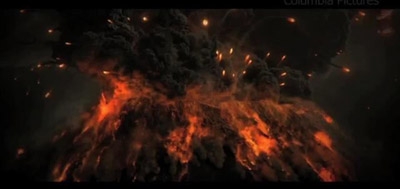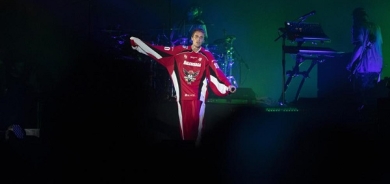Hollywood Movie Depicts Pompeii Destruction in 3D
February 5, 2014
Miscellaneous

LOS ANGELES —
Hollywood’s latest action adventure movie depicts the calamity of Pompeii, the ancient Roman city that was buried by the volcanic eruption of Mt. Vesuvius in 79 AD. The film, Pompeii, includes romance, exciting fight scenes, and some historically accurate elements about what happened. However, experts say filmmakers used some creative license for some parts.
Images of people buried in rock and ash - their terror forever frozen in time - haunt and fascinate many people. Pompeii director Paul Anderson visited the ancient city and saw the plaster casts of the victims first hand.
“There are these two intertwined bodies and the lovers are kind of just looking at one another. And that for me was very emotional and that was really the basis of the entire movie,” said Anderson.
In addition to a love story, the movie is also a feast for the eyes for moviegoers -- and for archeologists like Sarah Yeomans.
“I think they did a wonderful job recreating the city from the archeological site,” said Yeomans.
Director Paul Anderson claims Pompeii is the perfect movie for 3D.
“You want to be immersed in this ancient civilization and the spectacle of it,” said Anderson.
3D also captures the spectacle of the eruption of Mount Vesuvius, especially the spewing of firebombs down on Pompeii, destroying everything in their way. However, that’s not what actually happened, said volcano expert Rosaly Lopes. Instead, pumice, ash and rocks rained down on the city. The film also features earthquakes and even a tsunami. Those all did take place, but Lopes pointed out that the tsunami was not really as big as the one shown in the movie.
She also noted that those who live near Mount Vesuvius these days would not be caught off guard.
“We now have a lot of early warning systems because volcanoes don’t erupt without some precursor sign. And Vesuvius can erupt again. Vesuvius does have smaller eruptions so it doesn’t mean that it would be as bad as it was back then,” explained Lopes.
Yeomans said the filmmakers accurately captured the politics of the time, embodied by ruthless Romans.
“The Pompeians did not unilaterally consider themselves Romans. They were brought involuntarily into the expanding empire,” said Yeomans.
The desire for freedom is a theme that echoes throughout the film, according to Adewale Akinnuoye-Agbaje who plays the gladiator and slave Atticus, a friend of the main character Milo, played by Kit Harington.
“Freedom and equality which is timeless, and I think we all still strive for that today,” said Akinnuoye-Agbaje.
In his personal life, this British actor of Nigerian descent also struggled with the freedom to choose his own career.
“I studied law actually as a first profession. [I] have a bachelors and masters degree in law,” said the actor.
His father and sisters practiced law, but he ultimately followed his love of acting.
“I always knew that I’d have to succeed and show them because entertainment was not a credible profession to my parents’ generation. They thought I was wasting my education but they came around. It came full circle and it paid off. Plus I played a few lawyers as well,” said Akinnuoye-Agbaje.
To prepare for the film, Akinnuoye-Agbaje and Harington underwent grueling physical training to look like real gladiators. And while Hollywood may have used some creative license in Pompeii, the experts said it does give audiences a good idea of what was happening to the volcano, and what life was like before Vesuvius destroyed the city.
VOA















